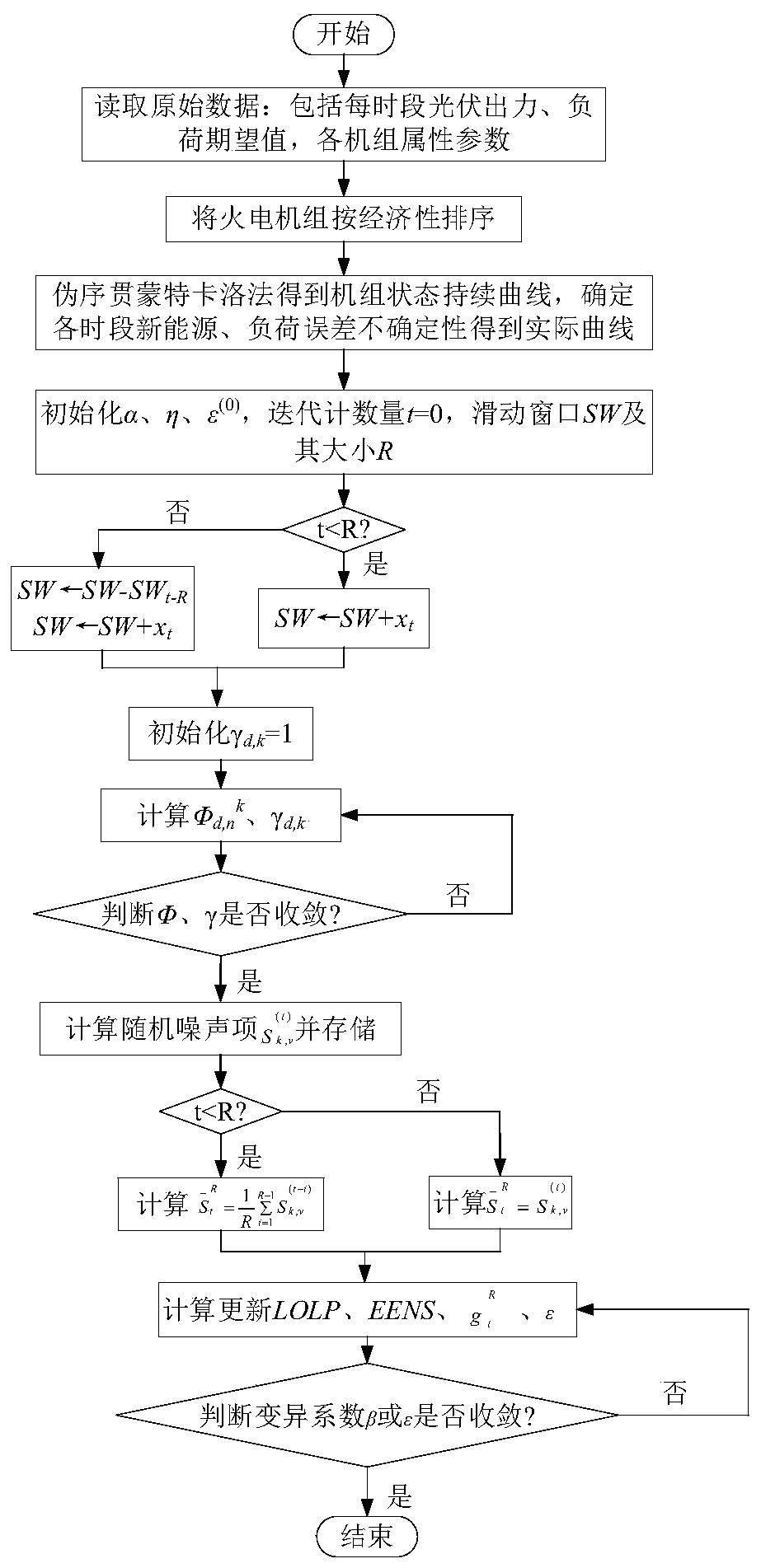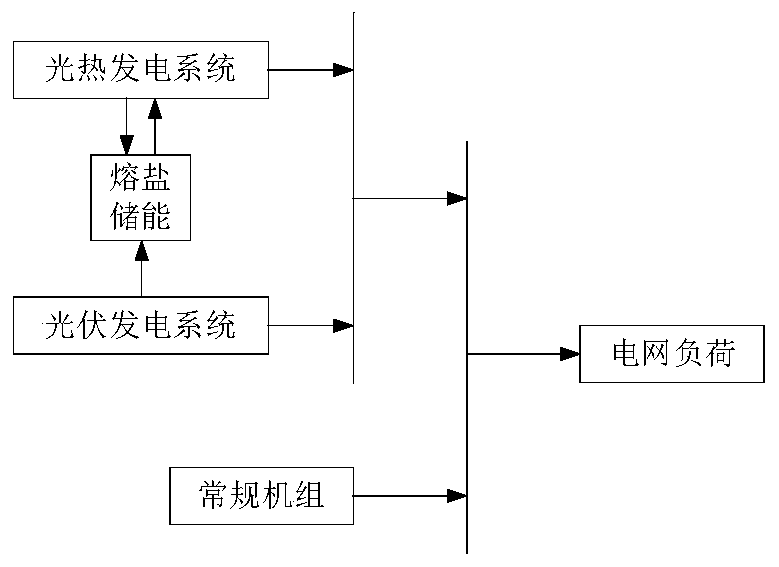Random production simulation method for power system containing photo-thermal-photovoltaic power generation
A photovoltaic power generation and power system technology, applied in data processing applications, complex mathematical operations, instruments, etc., can solve the problems of system operating cost estimation deviation, difficult new energy power supply planning, and optimistic estimation of new energy grid-connected operation, etc. Achieve the effects of reducing calculation time, improving calculation efficiency, and increasing convergence speed
- Summary
- Abstract
- Description
- Claims
- Application Information
AI Technical Summary
Problems solved by technology
Method used
Image
Examples
Embodiment 1
[0038] The present invention designs and proposes a stochastic production simulation method based on an improved algorithm for power systems containing photothermal-photovoltaic power generation, such as figure 1 As shown, the steps are:
[0039] Step A: Read the original data of photovoltaic output in each period, meet the expected value, and the attribute parameters of each unit, and sort the thermal power units according to economic efficiency;
[0040] Step B: Obtain the state continuity curve of the unit according to pseudo-sequential Monte Carlo, determine the uncertainty of the new energy load error in each period, and obtain the actual curve;
[0041] Step C: The implementation of the VR-SVI algorithm is as follows:
[0042] C1: Input the number D of the original state set, the number N of samples x, and the learning rate P t , local variational parameters Φ and γ, initialization hyperparameters α, η and global variational parameters ε (0) , iteration count variable...
Embodiment 2
[0049] 1 Random production simulation
[0050] 1.1 Pseudo-sequential Monte Carlo method
[0051] The pseudo-sequential Monte Carlo method combines the advantages of sequential and non-sequential simulation. In this method, non-sequential Monte Carlo sampling is performed on the system state, and only the fault-adjacent state subsequence that describes the entire outage process Sequential Monte Carlo simulations are performed to obtain timing information of load-loss state subsequences that contribute to the system reliability index. The basic idea of using pseudo-sequential simulation algorithm for stochastic production simulation of a power system containing n components is:
[0052] (1) Generate n random numbers, according to the unavailability rate λ of each component i Determine whether there is a component failure;
[0053] (2) If the component m fails, get the system fault state x m , recorded as the fault event m, otherwise, go to step (1);
[0054] (3) Generate ...
PUM
 Login to View More
Login to View More Abstract
Description
Claims
Application Information
 Login to View More
Login to View More - R&D
- Intellectual Property
- Life Sciences
- Materials
- Tech Scout
- Unparalleled Data Quality
- Higher Quality Content
- 60% Fewer Hallucinations
Browse by: Latest US Patents, China's latest patents, Technical Efficacy Thesaurus, Application Domain, Technology Topic, Popular Technical Reports.
© 2025 PatSnap. All rights reserved.Legal|Privacy policy|Modern Slavery Act Transparency Statement|Sitemap|About US| Contact US: help@patsnap.com



